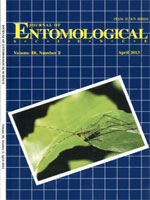
Bacteria Associated with Larvae and Adults of the Asian Longhorned Beetle (Coleoptera: Cerambycidae)
No abstract available
